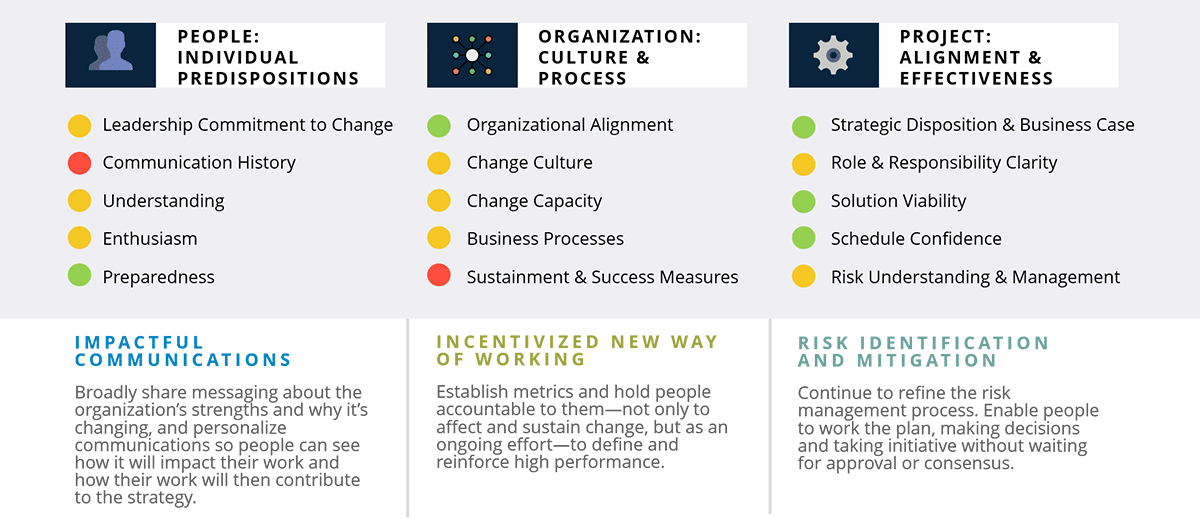Elements to Assess for Change Management Readiness
People are the key to any change, and individuals have different experiences, needs, and mindsets that need to be considered. The organization—the ecosystem of employees, functional departments, and processes—has a history and environment that influence behaviors and attitudes. And the project is the vehicle by which change is being implemented. If any of these three pillars is neglected, the risk of failure increases.
Implementation leaders and executive teams will find this three-pillar framework helpful for assessing their own situation and applying the insight to successfully execute and sustain major transformational change.

Are the People Ready?
Change impacts individuals directly and indirectly. They are not only the recipients of change; they are the enablers. It is crucial that employees who are directly affected are engaged, so they buy-in and support the effort. These are the people-related elements to assess to determine if they are ready for change:
- Leadership commitment to change: Is there sincere and engaged support from leaders at all levels of the organization? Conversely, do leaders demonstrate tacit buy-in or skepticism? Have they successfully led change in the past?
- Communication history: Are communications typically transparent, at a regular frequency, two-way, and encouraged? Or are they limited to a select group, leaving others in the dark or reliant on rumors?
- Understanding: Do employees feel well-informed about the change, and do they understand how it will affect them personally? Or are they unaware of the change or its impact?
- Enthusiasm: Are employees excited about what the transformation will bring? Or are they angry, afraid, or even working against the change?
- Preparedness: Do people understand and are they accepting of the new competencies, capabilities, knowledge, skills, techniques, and behaviors that the change requires? Or has the necessary training and development not yet been considered?
